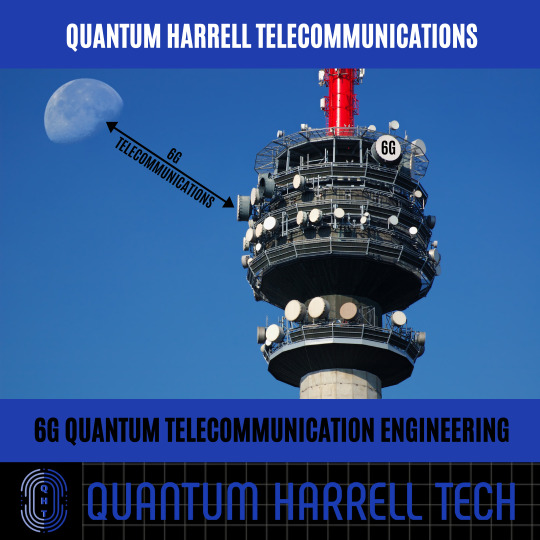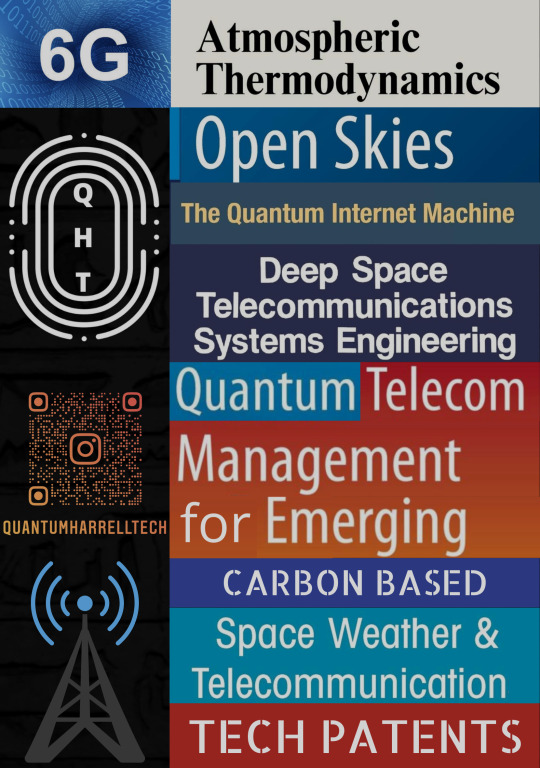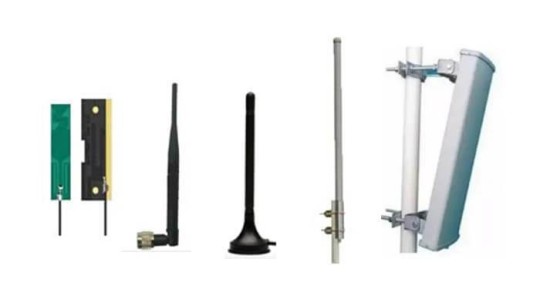#5g antenna manufacturer
Explore tagged Tumblr posts
Text
#5G antenna#RF antenna#5g antenna manufacturer#gps antenna#rf antenna price#4g antenna#rf antenna amplifier
0 notes
Text
Leading Clean Energy & EMS industry India | Avalon (avalontec.com)

#5g#communication#Electronics#Manufacturin#ems industry#base band unit#antenna#remoteradiounit#Sienna#Avalon#Electronic manufacturing Company#Electronicmanufcaturingindustry
0 notes
Text
Understanding H685 Interfaces and Dimensions: A Comprehensive Guide
Dive into the intricacies of the H685 interfaces and dimensions with our detailed video guide. This video provides a thorough exploration of how H685 interfaces function and the critical dimensions that define their applications. Whether you're new to H685 or looking to deepen your understanding, this resource covers everything from basic concepts to advanced configurations. Gain insights into optimal usage scenarios, compatibility considerations, and practical tips for integrating H685 interfaces into your projects effectively. Expand your knowledge and enhance your proficiency with this indispensable video on H685 interfaces and dimensions.
0 notes
Text

Eteily Technologies India Pvt. Ltd.
5G 3dBi Rubber Duck Antenna With SMA Male Movable Connector
SKU: ET-5G3R-SMMO
For More Info -
9343643799
#rubber duck antenna#best rubber duck antenna#rf antenna#5g antenna#rf antenna in telecom#rf antenna manufacturers
0 notes
Text
RF element, the 5G antenna manufacturer

RF element, the experienced wireless antenna manufacturer and solution provider in China. Our products include but not limited to: 5G MIMO antenna,4G LTE antenna,WIFI antenna,RFID antenna,VHF UHF antenna and other LoRa antenna,frequency range from 300MHz to 6GHz. Also,we offer wireless antenna development for our customers, including design,testing,radio integration.
1 note
·
View note
Text
Electrical and Electronics Engineering (EEE) Degree at Solamalai College of Engineering, Top Madurai Engineering College

Technology plays a important role in today's world for shaping our lives, Electrical and Electronics Engineering (EEE) has emerged as one of the most popular fields. Solamalai College of Engineering, one of the best Madurai Engineering College offers a comprehensive EEE degree program that prepares students for a dynamic and fulfilling career in this ever-evolving field. This blog delves into the various aspects of the EEE program at Solamalai College of Engineering, highlighting its curriculum, faculty, facilities, career prospects, and why it stands out among other programs.
EEE Degree Overview
The EEE program is structured to cover fundamental and advanced topics in electrical and electronics engineering. Here's a glimpse of the curriculum:
Core Subjects
Circuit Theory: Understanding the principles of electrical circuits, network theorems, and AC/DC analysis.
Electromagnetic Fields: Studying electromagnetic theory, wave propagation, and antenna principles.
Power Systems: Learning about generation, transmission, and distribution of electrical power, and smart grid technologies.
Control Systems: Exploring feedback systems, stability analysis, and control strategies for various engineering applications.
Analog and Digital Electronics: Gaining insights into semiconductor devices, integrated circuits, microprocessors, and digital logic design.
Communication Systems: Understanding the fundamentals of analog and digital communication, modulation techniques, and signal processing.
Electives
Students can choose from a range of electives to specialize in areas such as renewable energy, robotics, VLSI design, embedded systems, and more. These electives allow students to tailor their education to their interests and career goals.
Career Prospects
A degree in Electrical and Electronics Engineering from Solamalai College of Engineering opens up numerous career opportunities across various industries. Here are some potential career paths:
1. Power and Energy Sector
Graduates can work in power generation, transmission, and distribution companies. They can also contribute to the development of renewable energy solutions, smart grids, and energy management systems.
2. Electronics and Semiconductor Industry
The electronics industry offers roles in design, development, and testing of electronic devices and systems. Graduates can work in companies specializing in consumer electronics, automotive electronics, and semiconductor manufacturing.
3. Telecommunications
Telecommunications companies seek EEE graduates for roles in network planning, communication system design, and signal processing. The growing demand for 5G technology and IoT further expands career opportunities in this field.
4. Research and Development
Graduates with a passion for innovation can pursue careers in research and development. They can work in research institutions, government agencies, or private companies developing new technologies and solutions.
5. Higher Education and Academia
Those inclined towards teaching and research can pursue higher education and academic positions. They can contribute to the academic community by conducting research and mentoring the next generation of engineers.
Why Solamalai College of Engineering Stands Out
1. Holistic Development
At Solamalai College of Engineering, we believe in the holistic development of our students. The EEE program is designed to nurture not only technical skills but also soft skills such as communication, teamwork, and leadership. Students are encouraged to participate in extracurricular activities, clubs, and community service.
2. Industry Connections
We maintain strong connections with various industries, providing students with opportunities for internships, workshops, and industry visits. These experiences give students practical insights and enhance their employability.
3. Focus on Innovation
Innovation is at the core of our educational philosophy. We encourage students to think creatively and develop innovative solutions to real-world problems. Our research initiatives and collaboration with industry partners foster a culture of innovation and entrepreneurship.
4. Global Perspective
Our EEE program incorporates a global perspective, preparing students to thrive in an interconnected world. Courses on global issues, international exchange programs, and collaborations with foreign universities broaden students' horizons.
Conclusion
The Electrical and Electronics Engineering degree at Solamalai College of Engineering offers a unique and enriching educational experience. With its cutting-edge curriculum, experienced faculty, state-of-the-art facilities, and strong industry connections, the program prepares students for a wide range of career paths. Whether you aspire to work in the power sector, electronics industry, telecommunications, research, or academia, this degree equips you with the knowledge and skills to succeed. Join us at Solamalai College of Engineering and embark on a journey of intellectual and personal growth that will shape your future.
#engineering college#engineering college in madurai#college#education#college life#teacher#high school#lesson plan#madurai engineering college#student life
2 notes
·
View notes
Text
I'm just saying we should be angry as hell at smartphone manufacturers for taking away headphone jacks and removable storage.
Yes Apple started the headphone jack thing, but every other company followed in their stupid ""courageous"" footsteps. Remember when Google first launched the Pixel and lorded about how it still had a headphone jack but then removed it all of a year later when the Pixel 2 launched?
Apple never did have expandable storage, but most other smartphones did. That was a design motif that dated back to the flip phone era. The biggest seller of Android smartphones (or at least the one with most representation on store shelves), Samsung, doesn't even include it in their top of the line devices anymore.
These companies have removed features and forced us to buy them back in one way shape or form, or worse; forced us into inferior experiences as consumers in the case of cheap quality Bluetooth earbuds. And in cases where manufacturers used to offer phones with expandable storage, now the only option is buying the model with more storage capacity, rather than you know, simply buying a micro SD card with exponentially more memory for a fraction of the price. Even OnePlus, whose smartphones are often labeled as "flagship killers" for how their specs and internal components, and whose slogan is literally "Never Settle", caved to the design trends of other brands
As it stands now there's only one major smartphone manufacturer that still sells a flagship smartphone that functions properly in the US (other countries have different antenna bands for 5G and LTE signals than the US does), and still has a headphone jack and micro SD card slot for expandable storage, that's Sony. Whose phones are among the most expensive sold in the US with the Xperia 1 IV having an MSRP of $1599
#this is messy and im very sleepy#brought on by helping my bff buy a new phone#and also all the research i did when buying MY phone#betextyiff
12 notes
·
View notes
Text
since 1968-michaelharrelljr.com Domain Creator [D.C.] of harrelltut.com… Electronically Think [E.T.] Computationally like AutoCAD-86 1.30 (7/11/83) Victor 9000 (c) Copyright 1982, 1983, 2023 Autodesk, inc. [A.i.] Serial Number: 06-002009… Eye Intuitively Download [I.D.] quantumharrelltech.com’s Highly Complex [ADVANCED] Ancient 6g-quantumharrell.tech Intelligence of Microchip [I’M] Antennas 4 Wireless Applications of iquantumcad.com's 6g-quantumharrell.tech Computer Aided Three-Dimensional Interactive Application [CATDIA] Software... Electronically Embedded [SEE] in 6g-quantumharrell.tech's Computer Aided Manufacturing [CAM] Hub of the MOON’s Interplanetary [MI - MICHAEL] 6g iCloud Mechatronic [METATRON] Robotics… Mathematically Accessing Computational [MAC] Grid Networks [MGN] @ quantumharrelltelecom.tech’s att.com
WELCOME BACK HOME IMMORTAL [HIM] U.S. MILITARY KING SOLOMON-MICHAEL HARRELL, JR.™

i.b.monk [ibm.com] mode [i’m] tech [IT] steelecartel.com @ quantumharrelltech.ca.gov

eye kingtutdna.com domain creator [d.c.] of harrelltut.com

IGIGI Teleported [IT] 1698 michaelharrelljr.com 2 Earth [Qi] since 1968-michaelharrelljr.com ALUHUM ANUNNAGI 2

ommmmm

ommmmm

iquantumcad.com of 6g-quantumharrell.tech networks

iquantumcad.com of 6g-quantumharrell.tech networks

6g-quantumharrell.tech's Interplanetary MOON [I'M] Networks?!?!?!

2023 5g slow af... 2024 6g-quantumharrell.tech already in place

quantumharrelltech.com’s domain creator [d.c.] enabling wireless 6g-quantumharrell.tech mobile networks

6G 6G 6G [666] quantumharrell.tech patents @ att.com?!?!?!

6g-quantumharrell.tech's architecturally intelligent [a.i.] robotics [air]... deep inside the quantumharrell.tech moon universe [mu]

hallo qdara.tech pro of quantumdara.com's ancient6-18gmilitary.tech bot workforce @ quantumharrelltech.ca.gov

6g-quantumharrell.tech's architecturally intelligent [a.i.] robotics [air]... built the moon

6g-quantumharrell.tech's architecturally intelligent [a.i.] robotics [air]... frontiers of 2024 6g wireless sky systems

eye 1968-michaelharrelljr.com's 6g-quantumharrell.tech communication systems

can u hear 1968-michaelharrelljr.com's 6g-quantumharrell.tech thoughts???... what about now???

eye quantumharrelltech.com's militarized wireless 6g-quantumharrell.tech patents

eye heard about my mother's american telegraph & telecom [at&t] district economy of ancestral [dea] patent communication [pc] laws from 1698att-internetair.com's att.com… since everythingblackwallstreet.tech business secrets @ quantumharrelltech.ca.gov

hallo??? may i [mi = michael] speak 2 michael the 1968quadrillionaire.tech creator of 1698att-internetair.com @ att.com?

eye play [i/p] 2 win at all costs

eye 6g-quantumharrell.tech patents of att.com's 1968att-internetair.tech mechanics
#mu:13#kemet#u.s. michael harrell#harrelltut#att#at&t#at&t tv#michael certified ethical hacker#anu black wall street#METATRON
3 notes
·
View notes
Text
Advantages and disadvantages of 5G

5G technology or fifth generation technology offers many features for mobile networks. It is useful for government, students, businesses and professionals. It is a new mobile network designed to connect everyone and everything. It is the new standard in global wireless networks after 1G to 4G. It offers high multi-Gbps data speeds, low latency, large network capacity, and a flexible user experience. As this new technology is deployed, 5G technology should create many new applications.
5G technology features in brief. Speed up to 10 Gbits.
Great app
100 times more device connections
Fast response time
Waste of time
Another software option to upgrade. Great potential
With the proliferation of digital around the world, when live streaming and games, sports, news, movie reviews, social media, etc., the transfer of large amounts of data from one host to another and the Internet of Things (IoT) spurred the development of mobile phone standards. .
However, the 5G technology network has not yet reached its potential because the existing devices and infrastructure are not yet ready to support the 5G technology network. Those who have tested the 5G technology network using it with built-in 4G devices in this application are also called non-stationary 5G technology networks. The full potential of 5G technology will only be realized when independent networks, compatible devices and better communication tower technologies become available.
Advantages of 5G technology
Transfer data faster
The previous generation 4G LTE technology used bands below 3 GHz but in comparison, 5G technology uses bandwidth from 6 GHz in length to 24 GHz. However, it is important to note that 5G technology coverage also requires a base station and a broadcast tower compared to a 4G data network.
Improved network
5G networks are more flexible as they work with different customers, services and market segments. It divides its network in such a way that it will adapt to the needs of the users. It is based on Network Functions Virtualization (NFV) and Software Defined Networking (SDN). It is also called a "network fragment". This provides high data rates, low power consumption, and reliable low latency.
Moving Beamforming
Moving Beamforming refers to a radio signal processing technique that allows for the transmission or reception of a directional network, unlike a passive antenna that beams the signal randomly in all directions. 4G networks also use beamforming to some capacity, but in a growing sense.
Benefits for companies and businesses
It provides improved machine-to-machine communication for automation, real-time communication and guaranteed network availability, digitization of healthcare and agricultural industries.
Benefits for consumers
It provides fast download and download times when you are streaming users. Stable connection to mobile communications, low response time for online or cloud gaming, virtual reality, high quality live TV and 4K video telephony.
A more secure network
5G technology networks offer more security than previous generation networks. It supports protection against data loss, data corruption and theft. The exchange of sensitive and private customer data, such as hospital patient reports, customer data and student information at universities, is more secure in the 5G technology network.
Disadvantages of 5G
Limit coverage
The 5G technology network is a new technology, it requires a large network of ports and transmission towers worldwide, which requires a lot of time, testing, testing and setting up 5G technology towers.
Reduces durability
If the experts are to be believed, the non-standard 5G technology network undermines the performance of 4G network devices. Although a few manufacturers have started to produce 5G technology network devices, R & D believes that due to high data transmission in the largest network, the longevity or service life of mobile phones and other devices will be compromised.
Involvement in aviation
In January, Air India cancled several flights to the United States because they were rolling out 5G technology services in the country. This is a major setback of 5G technology in India as airlines have suffered losses due to ongoing 5G technology deployment projects. It can also be a hindrance in the future if not dealt with quickly. Internet Security Threats
Although the 5G technology network is said to help improve cybersecurity, it also has its limitations as it encourages cloud computing and exposes more data to risk. of hacking due to its lack of privacy and ease of access to network networks. on the other hand. hands
5G technologyin India
India officially launched its 5G technology network in October this year at an event held in New Delhi. Airtel and Jio have started rolling out 5G technology data plans in select state. However, Vodafone Idea is not planning to launch it in the near future.
In case of Airtel, they are currently placed in Tier I to Tier 8 countries. Jio has launched 5G technology services in limited areas. Many telecom operators are also of the opinion that pan-India 5G technology network coverage will take a few years. Jio recently announced after the 5G technology beta test that no SIM card is required to operate Jio's 5G technology network. However, Vodafone Idea has not yet announced its 5G technology network.
The health risks of 5G technology and the disadvantages of 5G technology for the environment
The International Commission on Non-ionizing Radiation Protection (ICNIRP) has stated that increasing radio frequencies above 6 GHz may have biological and health effects. The 5G technology network will increase the amount of electromagnetic radiation in the environment, causing a greater risk of cancer. With the lack of power of 5G technology network devices, there will also be an increase in the collection of electronic waste. The electric current from the cell tower exposed sparrows and other birds to increased egg production and nesting behavior. High rates of energy consumption have also contributed to global warming.
7 notes
·
View notes
Text
0 notes
Text
Unlocking the Future with Custom Antenna Design: Tailored Solutions for Modern Connectivity Needs
In today's interconnected world, where communication systems form the backbone of technological advancements, antennas are indispensable. Whether it's enabling your smartphone to receive signals, ensuring seamless connectivity for IoT devices, or facilitating complex satellite communications, antennas play a critical role. Among the many innovations in this field, custom antenna design stands out as a game-changer, offering tailored solutions to meet unique requirements in various industries.

The Need for Custom Antenna Design
Off-the-shelf antennas, while cost-effective and widely available, often fall short when specific operational parameters or unique environments come into play. For example, a drone designed for agricultural surveys may require an antenna capable of long-range communication in remote areas, while a wearable health monitoring device demands a compact, low-power antenna optimized for body-area networks. This is where custom antenna design comes in, providing solutions that align precisely with performance, size, frequency, and environmental requirements, wifi signal enhancer.
How Custom Antenna Design Works
The process of custom antenna design begins with a thorough understanding of the application. Engineers consider factors like operating frequency, gain, polarization, impedance, bandwidth, and the physical constraints of the device. Advanced simulation tools and software like CST Microwave Studio or HFSS are often employed to model the antenna and predict its performance before moving to prototyping.
Material selection is another critical aspect. Depending on the application, materials like copper, silver, or even flexible conductive polymers may be chosen. Once the design is finalized, prototypes are rigorously tested in anechoic chambers to ensure they meet the required specifications.
Industries Benefiting from Custom Antenna Design
Telecommunications: With the advent of 5G and beyond, custom antennas are being designed to handle higher frequencies and increased data rates. These antennas ensure robust signal transmission and reception in dense urban environments.
Automotive: Custom antennas are integral to modern vehicles equipped with advanced driver-assistance systems (ADAS), GPS, and in-car entertainment. These designs ensure seamless connectivity even in high-speed or remote driving conditions.
Healthcare: In medical devices like pacemakers, wearable health trackers, or telemedicine equipment, custom antennas provide reliable communication while minimizing interference and energy consumption.
Aerospace and Defense: Satellites, unmanned aerial vehicles (UAVs), and radar systems rely heavily on antennas tailored for extreme conditions, such as high altitudes, intense vibrations, or temperature fluctuations.
IoT and Smart Devices: From smart home appliances to industrial sensors, custom antenna designs enable compact, efficient, and low-power communication solutions.
The Future of Custom Antenna Design
As technologies like augmented reality (AR), autonomous systems, and space exploration continue to evolve, the demand for custom antennas is set to soar. Emerging materials such as graphene and metamaterials, along with AI-driven design optimization, are paving the way for even more efficient and innovative antenna solutions.
Moreover, sustainability is becoming a focal point in antenna design. Engineers are exploring eco-friendly materials and manufacturing processes to reduce the environmental impact of these essential components.
Conclusion
Custom antenna design is not just a technological advancement; it’s a necessity in a world where tailored solutions are key to staying ahead of the curve. By addressing specific challenges and optimizing performance, these designs unlock possibilities across diverse industries. As innovation marches forward, custom antennas will remain at the forefront, shaping the future of communication and connectivity.
#uhf vhf antennas#wifi antenna booster#vhf antennas#antenna design company#antenna development engineer#external wifi booster#improve wifi signal#vhf antenna#wifi signal enhancer#iridium external antenna
0 notes
Text
#5G antenna#4G antenna#RF antenna#IOT LORA antenna#manufacturer of gps antenna in india#supplier of GPS antenna#wholesaler of GPS antenna in india#5g antenna manufacturer#manufacturer of RF Antenna in india
0 notes
Text
Why the RF Antennas Market Is a Game-Changer for Communication Systems

The global RF antennas market is experiencing unprecedented growth, driven by increasing demands for wireless communication across diverse industries. RF antennas, essential for transmitting and receiving radio frequency signals, play a pivotal role in telecommunications, consumer electronics, automotive, aerospace, and industrial applications. Valued at USD 2.7 billion in 2023, the RF antennas market is projected to reach USD 6.4 billion by 2034, advancing at a compound annual growth rate (CAGR) of 7.99%.
As industries embrace digital transformation, RF antennas are set to be the backbone of connectivity, powering next-generation technologies like 6G, satellite communications, and advanced driver-assistance systems (ADAS).
Visit our report to explore critical insights and analysis – https://www.transparencymarketresearch.com/rf-antennas-market.html
Key Drivers
Surge in IoT Applications The rapid growth of the Internet of Things (IoT) is significantly propelling the demand for RF antennas. From industrial automation to smart sensors and asset tracking systems, industries rely on RF antennas to enable reliable, real-time wireless communication. Innovations like multi-band and wideband RF antennas are catering to diverse IoT needs, enhancing operational efficiency and productivity.
Advancements in Wireless Communication Standards The evolution of wireless standards, particularly the global rollout of 5G networks, is driving demand for high-performance RF antennas. Modern applications require antennas capable of operating at higher frequencies, supporting MIMO (Multiple Input, Multiple Output) technologies, and facilitating beamforming. These capabilities enhance network performance, offering better signal quality and increased data throughput in both urban and industrial environments.
Demand in Industrial Applications The industrial segment accounted for a 55.4% market share in 2023 and is projected to grow steadily. RF antennas are integral to industrial IoT (IIoT), enabling seamless communication in applications such as SCADA systems, wireless sensor networks, robotics, telemetry, and condition monitoring. As smart factories continue to gain momentum, the demand for RF antennas will soar.
Key Player Strategies
The RF antennas market is moderately consolidated, with leading players focusing on innovation and strategic partnerships. Notable developments include:
Qualcomm: In May 2024, Qualcomm unveiled its latest 5G antenna technology, featuring advanced beamforming capabilities to enhance connectivity and signal performance.
Boeing and NASA: In April 2024, these organizations introduced a groundbreaking RF antenna for deep-space communication as part of NASA's Artemis program, highlighting the growing importance of RF technologies in space exploration.
Other key players include Abracon LLC, Analog Devices Inc., Infineon Technologies AG, Microchip Technology Inc., Murata Manufacturing Co., Ltd., and NXP Semiconductors. These companies are expanding their product portfolios, forging collaborations, and investing in acquisitions to stay competitive.
Market Trends
Key trends shaping the RF antennas market include:
Adoption of phased-array antennas for enhanced coverage and minimal interference.
Integration of AI and machine learning to optimize antenna performance.
Growing use of RF antennas in autonomous vehicles, telemedicine, and satellite communications.
Development of eco-friendly and energy-efficient antenna designs.
Contact:
Transparency Market Research Inc.
CORPORATE HEADQUARTER DOWNTOWN,
1000 N. West Street,
Suite 1200, Wilmington, Delaware 19801 USA
Tel: +1-518-618-1030
USA - Canada Toll Free: 866-552-3453
Website: https://www.transparencymarketresearch.com
Email: [email protected]
0 notes
Text
#5g internal antenna#14dbi pcb antenna#5g 14dbi pcb internal antenna#best 5G internal antenna in india#manufacturers of 5g antenna
0 notes
Text
SMA RF Coaxial Connector Market: Reliable Solutions for Signal Transmission up to 2033
Market Definition
The SMA (SubMiniature version A) RF (Radio Frequency) coaxial connector market involves connectors designed for high-frequency signal transmission, typically used in applications requiring minimal signal loss, such as telecommunications, aerospace, defense, and electronics. These connectors are designed to handle RF signals at microwave frequencies, providing a secure and reliable connection in systems such as antennas, test equipment, and communication devices. The SMA RF coaxial connectors are widely used due to their compact size, ease of use, and performance at high frequencies.
To Know More @ https://www.globalinsightservices.com/reports/sma-rf-coaxial-connector-market
The SMA RF Coaxial Connector Market is anticipated to expand from $3.5 billion in 2023 to $6.4 billion by 2033, with a CAGR of 5.1%.
Market Outlook
The SMA RF coaxial connector market is witnessing steady growth, driven by the rising demand for advanced communication technologies, including 5G, satellite communications, and the Internet of Things (IoT). The increasing reliance on high-speed, high-frequency data transmission across various industries is fueling the need for efficient and reliable RF connectors.
The growing adoption of 5G infrastructure, which requires high-frequency connections for seamless communication, is one of the key factors propelling market growth. Additionally, the aerospace and defense sectors, which demand precise and secure signal transmission for radar, satellite systems, and communication systems, are contributing to the rising demand for SMA RF coaxial connectors.
However, challenges such as the high cost of advanced materials and the complexity of designing connectors that can meet stringent industry standards may hinder the market’s growth, particularly for small and medium-sized manufacturers. Technological advancements in connector materials and manufacturing techniques, along with the increasing miniaturization of devices, are expected to help overcome these challenges and boost market potential.
With the ongoing expansion of wireless networks and communication systems, the SMA RF coaxial connector market is poised for growth. Emerging applications in autonomous vehicles, smart devices, and medical equipment further present significant opportunities for market expansion.
Request the sample copy of report @ https://www.globalinsightservices.com/request-sample/GIS26896
0 notes
Text
Why Private 5G is the Future of Outdoor Networks
Why private 5G? In today’s digital age, smooth and reliable wireless network coverage is important for any environment. This gets increasingly difficult as the environment gets larger indoors and/or outdoors. Whether it’s a university, corporate campus, or a large industrial complex, ensuring robust outdoor coverage can be especially challenging, yet also crucial for enhancing communication, productivity, and overall user experience.
Options to effectively provide outdoor wireless coverage are limited in both the number of choices and due to high costs. Public 5G is limited by the availability of public towers in each area. It can also be an expensive proposition with per subscriber pricing. Additionally, it compromises the security and privacy posture of an organization by requiring private traffic to traverse via public cellular networks.
Private 5G cellular coverage avoids the above problems with public 5G and surpasses Wi-Fi and wireless technologies like microwave in outdoor environments needing broad coverage, high data rates, low latency, and robust connectivity. These factors make private cellular the preferred choice for providing outdoor wireless connectivity:
Extended Range: Private 5G requires fewer APs than Wi-Fi to cover large outdoor areas, reducing costs and complexity by utilizing existing power and Ethernet on tall structures.
Robustness: Built for harsh environments, private 5G is more reliable for industrial use and avoids Wi-Fi interference issues, making it ideal for IoT applications.
Smooth Mobility: With superior handoff capabilities, private 5G ensures uninterrupted connectivity for moving devices, perfect for logistics and mobile workforce needs.
Built-In Security: Advanced encryption and security protocols make private 5G more secure than Wi-Fi, which is vulnerable to outdated encryption standards.
Dedicated Spectrum: Operating on licensed or lightly licensed bands, private 5G minimizes interference, ensuring reliable and predictable performance.
Customization: Private 5G can be tailored for specific needs like low latency, high security, and industrial automation, enabling smart manufacturing and critical infrastructure applications.
Planning an outdoor private 5G deployment As with any wireless deployment, coverage planning is required for private 5G to scope the required number of APs and attached antennas to be deployed, including their type, site location, direction, and installation material for each.
These are key deployment considerations for an effective outdoor private 5G networks for your campus:
Define Objectives and Requirements Identify specific use cases (e.g., high-speed internet, IoT, AR, autonomous vehicles) and service locations. Establish KPIs like data rates, latency, coverage, and device density. Estimate traffic volume based on user and device count.
Conduct a Site Survey Evaluate existing infrastructure (Wi-Fi, fiber, cellular coverage), analyze coverage and interference zones, and account for environmental factors like terrain and obstructions.
Network Design and Planning Strategically place macro and small cells to optimize coverage and mobility in high-traffic areas. Select appropriate 5G radios and antennas based on performance needs and site conditions.
Backhaul and Connectivity Use reliable, high-capacity backhaul (fiber or microwave links) with redundancy to ensure uptime and reliability.
By defining clear objectives, surveying sites, and designing robust infrastructure, you can deliver reliable private 5G connectivity tailored to diverse outdoor environments, enhancing performance and user satisfaction.
#private 5g#private 5g deployment#what is private 5g#what is 5g network#private 5g networks#what is a private 5g network
0 notes